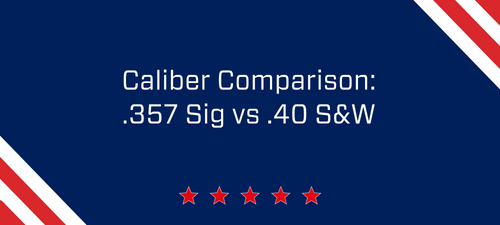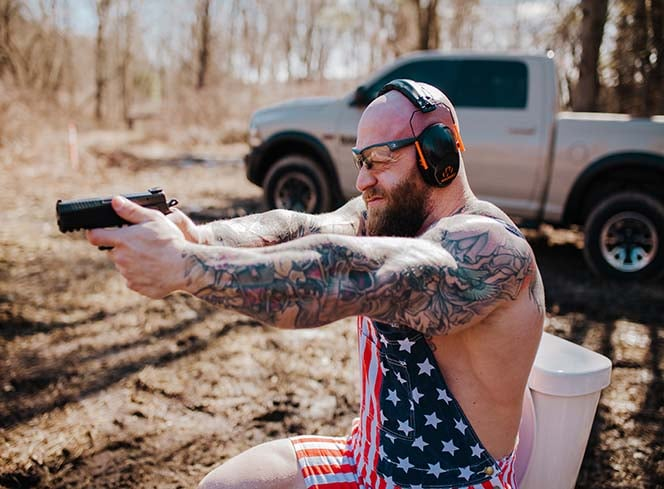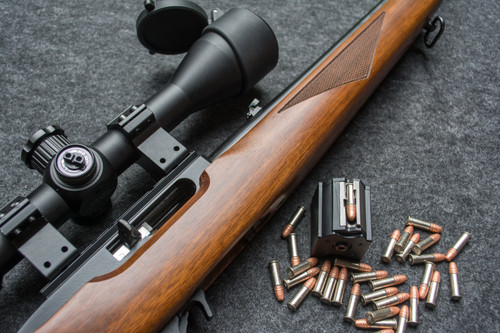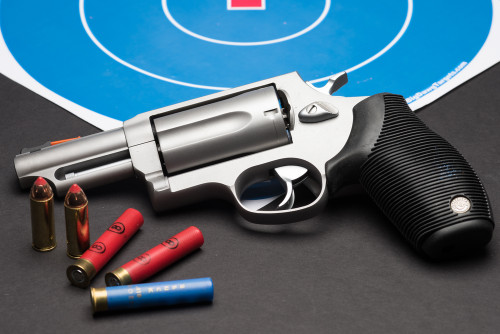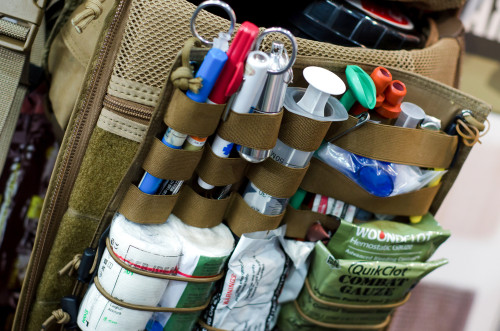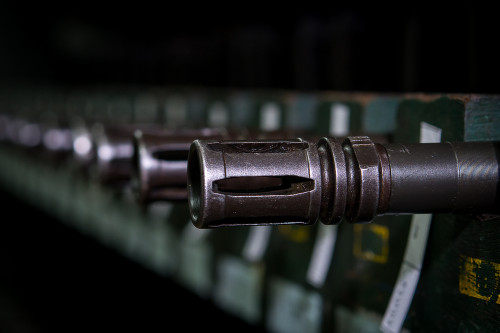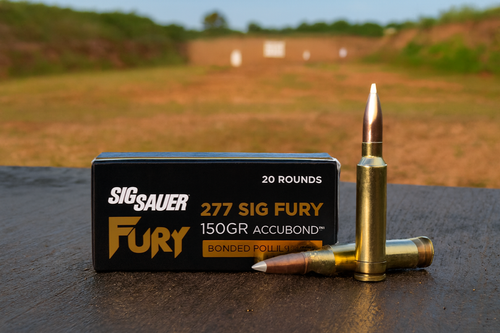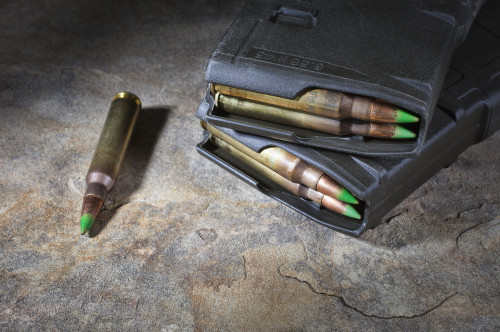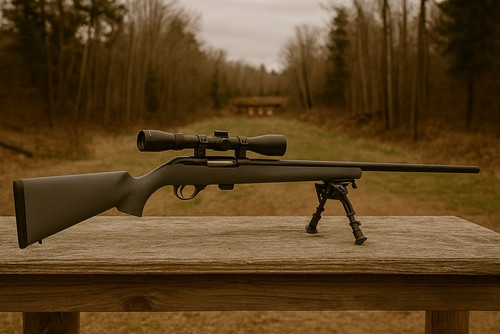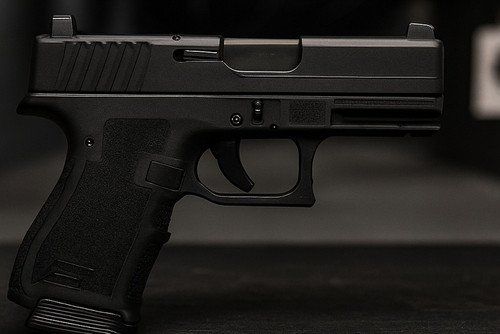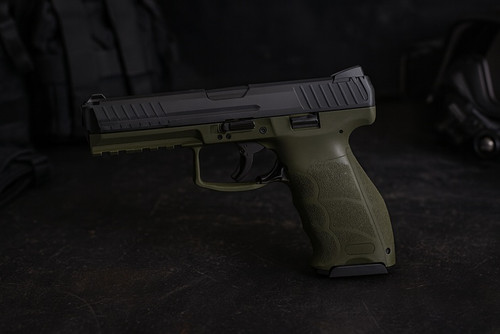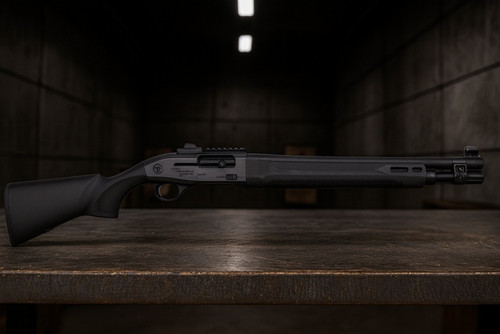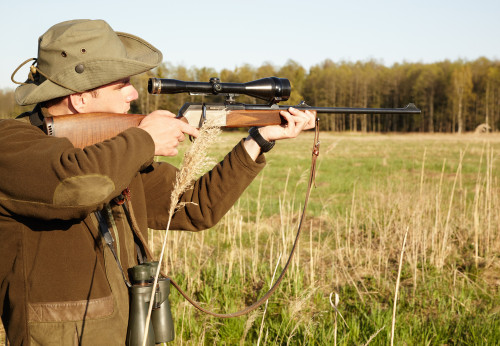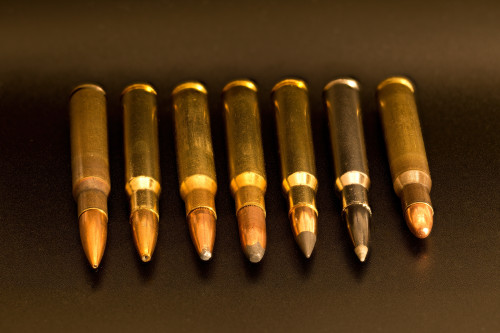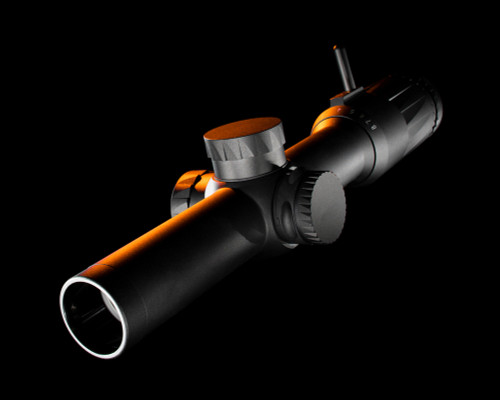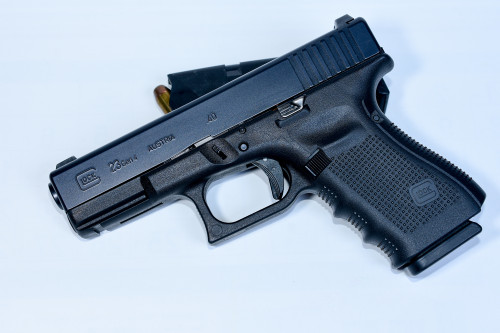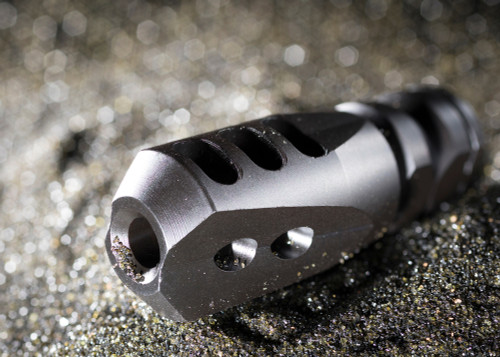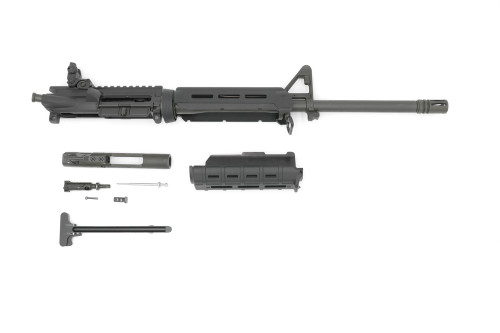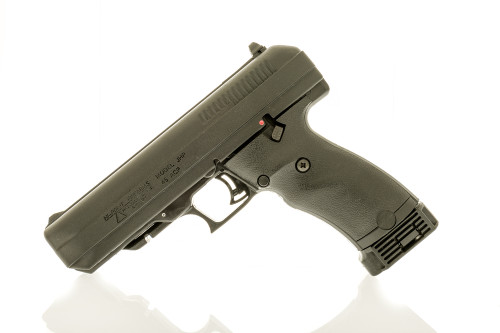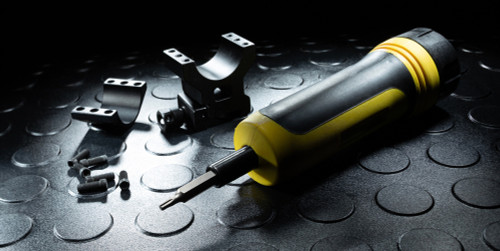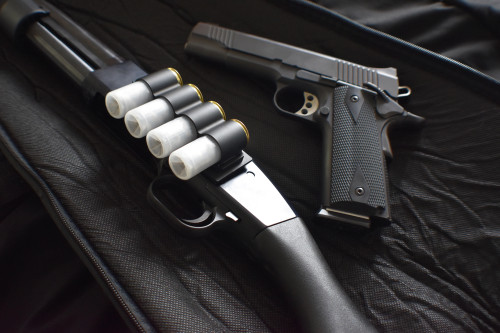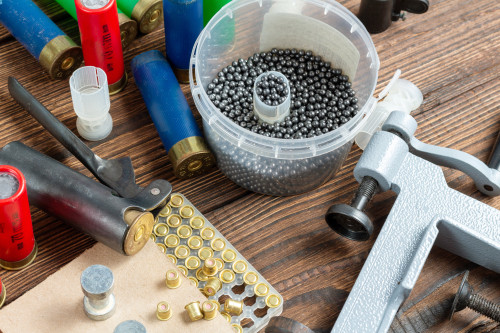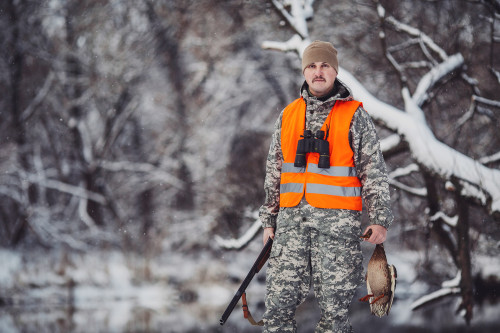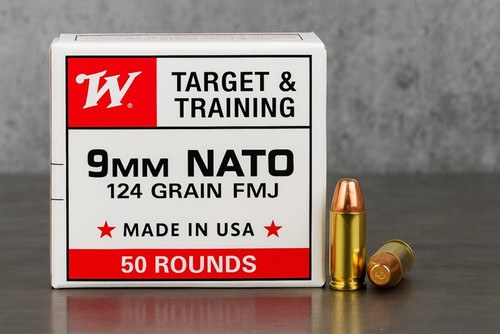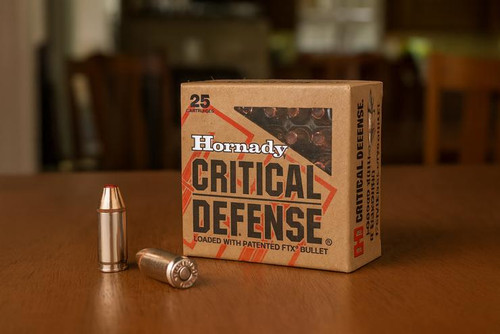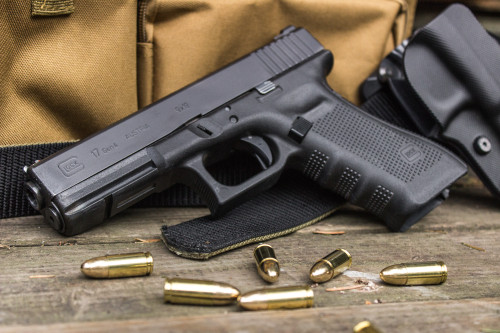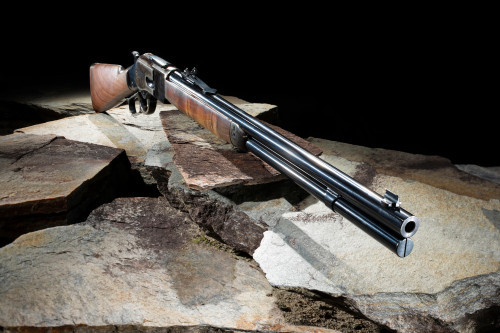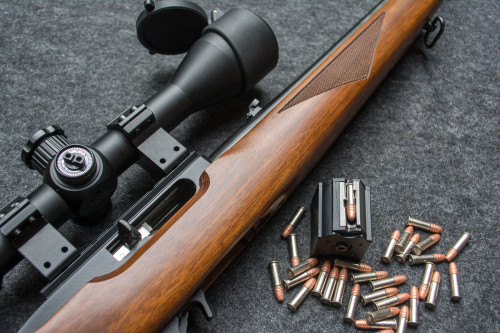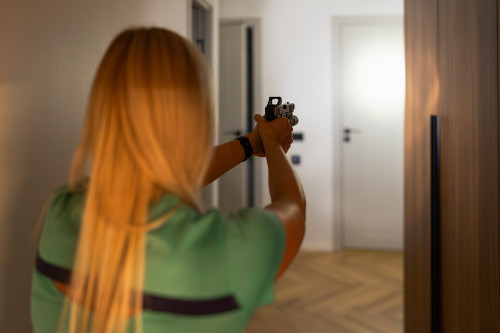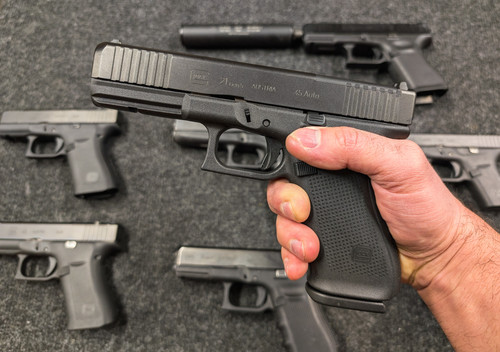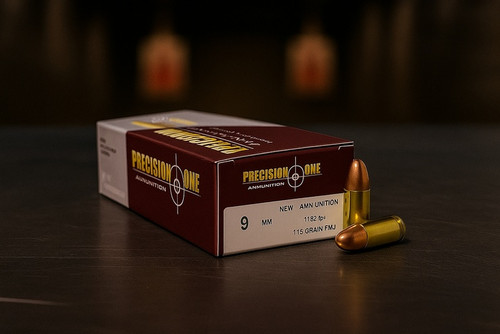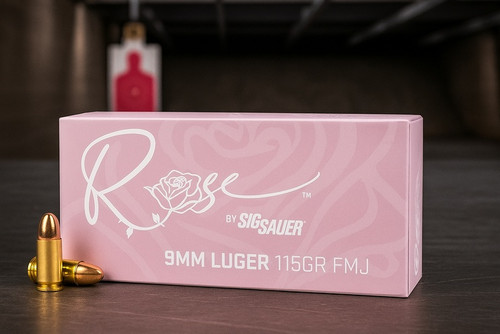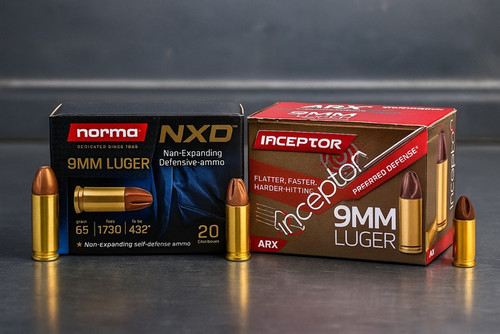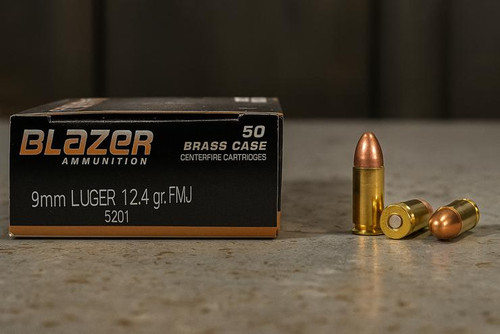When folks look outside the 9mm for a go-to pistol round, it’s because they want a more powerful cartridge. This is fair. While the 9mm has many benefits, it won’t exactly remove meat from bone.
In conversations surrounding the best handgun calibers, the .40 S&W and .45 ACP are frequently mentioned. In fact, the .40 Smith & Wesson (S&W) once tried to overtake the 9mm as the superior pistol cartridge. It never quite crossed the finish line, but its host of redeeming qualities made a valiant effort.
But what about the .357 Sig? The bottlenecked, keg-looking scorcher is a close cousin to the .40 and is chronically undervalued by those looking to pack more punch in their EDC (everyday carry) loadout. The .357 Sig is a speed demon that packs an outsized punch, but without major law enforcement adoption like the .40 S&W, it’s since been relegated to a niche caliber with a cult following.
So which is more powerful? Is the .357 Sig getting shafted because it wasn’t adopted by law enforcement? That’s what we’re here to answer.
Quick Comparison: .357 Sig vs .40 S&W
In a nutshell, the .40 S&W takes the cake in most cases for kinetic energy due to its heavier bullets and respectable velocity. However, in a few cases, the .357 Sig eclipses the power of the .40 (and most autoloading handgun cartridges) delivering energy on par with the .357 Magnum.
However, there’s lots more to this debate than kinetic energy. Just so we’re comparing apples to apples, let’s consider the Hornady Critical Defense (.40 S&W) and the Hornady Critical Duty (.357 Sig). Here’s a quick look at how they stack up:
| Caliber | .357 Sig | .40 S&W |
|---|---|---|
| Type | Hornady Critical Duty | Hornady Critical Defense |
| Grain | 135 | 165 |
| Cost (500 rds) | ~$.50 per round for bulk | ~$.26 per round for bulk |
| Muzzle Velocity | 1,225 fps, 4" barrel | 1,175 fps, 4" barrel |
| Muzzle Energy (ft. lbs.) | 450 | 506 |
| Drop @ 100 Yards | -5.4" w/50-yard zero | -6.2" w/50-yard zero |
| Ballistic Coefficient | .170 | .145 |
| Loudness | DAMN Loud | Pretty Loud |
| Capacity | Equal | Equal |
| Availability | Good, but not many choices | Very good |
Overall, these are two extremely viable cartridges that are often overlooked by shooters. Read on for a more detailed look at each cartridge, plus the pros and cons of using each one.
Origins of the .40 S&W
The fabled story about the development of the 10mm (and subsequently the .40 in the ’90s) starts with the FBI. The bureau wanted agents to have a more powerful sidearm capable of greater penetration and stopping power than what the 9mm offered at the time. The 10mm delivers both of these in spades, but at a steep penalty in blast, recoil, and abuse to the gun that fires it.
With many agents struggling to harness the power of the 10mm, Smith and Wesson decided against reinventing the wheel and lopped a few millimeters off the case. This brought the recoil back down to a manageable level. Over time, the .40 S&W’s power and recoil scratched the itch of more shooters and agencies, and before long, departments across the country began fully adopting this new cartridge.
.40 S&W Pros
The .40 S&W gets hate from followers of cartridges on both ends of the power spectrum. Specifically, 10mm Auto fans call it the .40 “Short & Weak.” 9mm lovers think it’s an obnoxious and unnecessary round that doesn’t offer anything new over the 9mm. But these fanboy claims simply don’t hold water once we delve into the hard facts.
So why would you want to carry a .40? Ah, let us count the reasons.
Big Bullet = Big holes
As the name implies, the .40 S&W has a bullet diameter of .40”. This represents the bullet’s frontal area, or how wide it is when you look at it. Frontal area is important in ballistics because assuming the bullet doesn't expand as it hits a target, the frontal diameter is how large of a swath the bullet will poke through the target.
This is important because the bigger the bullet, the more stuff it’ll encounter as it passes through. When trying to stop a violent threat ASAP, the ability to create larger holes in your target is a significant advantage. Most quality, modern .40-caliber hollow points expand, some nearly doubling in size to .79”. There are plenty of ballistics tests online that show how well good quality defensive ammo expands, furthering your chances of incapacitating a threat.
More Choices, Less Money
An advantage the .40 has over the .357 Sig is the amount of bullet offerings. Because the .40 saw more widespread adoption, manufacturers were more willing to devote time and money to developing quality defensive ammo as well as bulk practice rounds.
The .40’s popularity and the subsequent investment in the round has made it more ubiquitous, creating cheaper and more abundant ammo. In this case, “cheaper” means half the cost of the .357 Sig. This is a big factor for many shooters. You’re not likely to burn through several boxes of ammo when you’re sending $.50 down the barrel each time you squeeze the trigger instead of $.25.
Reloader’s Dream
If you’re a reloader, we don’t need to tell you about what a pain bottleneck cartridges are. However, the .40 is a straight-walled cartridge, meaning it doesn’t get skinny at the top like the .357 Sig does. Resizing the neck of a .357 and putting it back into spec takes a few extra steps in the reloading process, whereas reloading .40 is a fairly simple process.
Also, the .40 is a super versatile round for reloaders. You can crank out super juicy loads that are on par with run-of-the-mill 10mm Auto loads, or drop it down to mouse fart loads that feel like a nice 9mm.
As a lesser known fact, you can also shoot .40 S&W in many 10mm barrels. You might not see the accuracy the 10mm delivers when shooting .40 in a 10mm barrel, but it can be done, assuming the magazines don’t give you any feeding issues.
Suppression
Suppressors are becoming more and more common these days, and the 9mm is the go-to for many, but the .40 is an awesome option to suppress. Milder loads with heavy bullets remain subsonic, meaning there’s no sonic boom (crack when it comes to guns) when you pull the trigger.
With no crack, you just get a muffled report and nothing more. James Bond approves.
.40 S&W Cons
While the .40 S&W is an awesome cartridge, it’s not without drawbacks. For instance, some might consider the .40 underpowered because it uses a shortened 10mm case.
Many of the bullets the 10mm Auto and .40 S&W fire are the same, but the .40 has a case length of 21.6mm (as opposed to the 10mm’s 25.2mm case). Even though the difference is less than 4 millimeters, it’s enough room for more gunpowder, which gives the mighty 10mm more velocity and kinetic energy.
Still, the .40 S&W has a lot of power behind it — and this is the main reason some people don’t care for it.
This Baby Kicks
While felt recoil is hugely variable based on the gun and the load, heavier bullets are generally snappier than lighter ones, assuming they’re traveling at the same speed. However, with fast, lightweight bullets, this rule of thumb goes out the window.
Most .40 S&W ammo is either 165 or 180 grain. You can find the oddballs that are lighter or heavier, but these two are proven performers in velocity and penetration. Most 165-grain offerings leave a 4” barrel in the neighborhood of 1,000 to 1,100 and many 180-grain loads clock in around 900 to 1,000 fps. The faster the load, the more gunpowder it packs, equalling more felt recoil that can be difficult to control for some shooters.
Shooting a .40 in a lightweight handgun is a brisk affair, but it can be done with practice. Most folks who opt for a .40 for self defense stick with proven hollow points in the 165- or 180-grain range. Again, if you need your attacker to stop, making two holes (entry and exit) is generally more persuasive.
Origins of the .357 Sig
The story of the .357 Sig starts in the 90’s, when German gunmaker Sig Sauer wanted to get in on the action with its own hotrod pistol round. The .357 Sig was created in the hopes of snagging a lucrative government contract (of which they have many these days). The design is based on the 10mm Auto case, albeit shortened and necked down to accept a .357-caliber slug.
The common lore surrounding this cartridge is that Sig was chasing the performance of the classic 125-grain .357 Magnum load, which has a proven track record of stopping bad guys. However, the laws of physics limit the .357 Sig from ever reaching the same potential. The .357 Magnum can carry 26.2 grains of water (a measurement of case capacity) to the .357 Sig’s 19.6. That said, the .357 Sig does an admirable job, owing to its maximum operating pressure of 40,000psi (which eclipses the Magnum’s 35,000).
.357 Sig Pros
So what’s the appeal of the .357 Sig, even though it mostly fails at meeting its stated goal? (Note: you can cherry-pick some data to find where it meets .357 Mag performance).
No one questions the stopping power of the venerable .357 Magnum, so a round that flirts with Magnum-level performance with less recoil and autoloader capacity is worth a look. While the .357 is often overlooked, this quirky little cartridge delivers scorching speeds, excellent terminal ballistics, and a great degree of accuracy.
Bottled Lightning
The .357 Sig is a speed demon, and can be fast enough to deliver a good degree of hydrostatic shock to any assailant. Hydrostatic shock is the phenomenon that reportedly occurs when a projectile moving at extremely rapid speeds meets flesh and causes extra trauma to the area surrounding the bullet via a pressure wave. The size and extent of the damage depends on the speed and type of bullet, but when you reach hydrostatic shock territory, suffice it to say you’re going to cause a lot more damage than bullets that pass through a target and don’t have this additional wounding effect.
On another note, you don’t want super long cartridges to jump from a magazine into a chamber. It’s better if they remain stationary and are spun into position, like they do in a revolver. In revolver cylinders, you can top long cases with long bullets without fear of affecting reliability. This is why the .357 Sig is best at 125 grains and below.
Ballistic Energy
To be clear, the Sig does meet .357 Magnum energy in hyper fast loads that yield 575 ft.-lbs. of energy and up. This is considerably more than a 9mm (at about 400+) and a hair higher than the steamiest .40 loads that deliver roughly 550 ft.-lbs. of energy.
Granted, these numbers are huge generalizations (there are even 9mm loads that top 500 ft.-lbs.), but suffice it to say, the spiciest .357 Sig delivers more energy than the hottest .40, and that’s saying something.
Accuracy
Accuracy isn’t the sexiest thing to mention, and bullseye capability isn’t a chief concern of most armed citizens. That’s not to say that you should be cool with slinging lead all over creation, but in a panic, you won’t be looking to make a perfect group on your attacker’s head or chest.
That said, the .357 Sig is known to be freaky accurate. Some rounds (like the .38 Special and .45 ACP) are known as being “inherently accurate,” and you can count the .357 Sig among them. Why these cartridges are more accurate than others is a matter of much debate (and probably a dose of voodoo). Just take our word for it that the .357 Sig holds its own on the target range.
Capacity
This is a wash for both the .40 and .357 Sig. They both share the same parent case, so the case diameter at the widest part is identical. If a gun says it will hold 15 rounds of .40 ammo, you can be certain it’ll hold 15 rounds of .357 Sig as well.
Reliability
When a bullet is stripped from a magazine to be fed into the chamber, it has a greater chance of doing this properly if the cartridge is somewhat tapered. That’s why the AK-47 is arguably the most reliable firearm in the world — it uses the tapered 7.62x39 cartridge.
A bullet with a tapered design is always going to feed more smoothly and reliably than one that’s straight-walled. With that in mind, the funny shape of the .357 Sig lends it to being extremely reliable in semi-autos.
.357 Sig Cons
While the .357 Sig has a lot to brag about, it’s got drawbacks as well — perhaps even more than the .40 S&W. Here are some reasons why some people don't like this round:
It’s Loud as Hell
At some point, you’ve gotta pay the performance piper. The awesome velocity and terminal ballistics come at a cost. The chief complaint leveled against Sig’s fancy round is that it’s L-O-U-D.
Yes, we get it, you don’t go shooting a gun when you want some peace and quiet, but this little rascal (especially in hotter, higher-pressure loads) is an absolute terror on the eardrums. The word is “blasty” and it applies to most every high-pressure cartridge, handgun and rifle.
Another ill effect from this performance is that the violent action beats on your gun a bit more than the mild-mannered 9mm. However, this is usually a moot point anymore with modern guns being appropriately beefed up to handle the hot Sig round.
Average Penetration
Although the .357 Sig is a scorcher, it doesn’t deliver outrageous penetration. Most .357 Sig loads meet the 12”-18” specification demanded of the FBI, and not much more.
Lighter loads aren’t super penetrators because they lack the kinetic energy that heavier ones do. The size of the .357 Sig’s case and the various quirks of semi-auto handgun chambers place constraints on cartridges in order to make sure they feed and extract reliably.
That said, some hot loads with a 125-grain bullet can hit north of 1,400 fps from a 4-inch barrel (which is admittedly ridiculous). Other heavier loads (135 and 147 grain) still fire around 1,200 fps and penetrate even deeper.
Money Matters
Buying a box of .357 Sig is painful. On average, normal .357 costs roughly double the amount of the .40 S&W. Yikes. With ammo prices already much higher than they have been in previous years, this is nothing to shrug off. This price difference means diminishing returns par excellence.
Reloading Quirks
As we mentioned, reloading bottlenecked cartridges is a lot more involved than it is with straight-walled cartridges. However, for rounds like the .357 Sig, the juice might be worth the squeeze because factory ammo already costs so much. Plus, you’re able to download or upload the velocity (and in turn recoil and blast) by reloading your own .357 Sig rounds to your liking.
.40 S&W vs. .357 Sig Ballistic Comparison
Now that we’ve hashed out the advantages and disadvantages of each round, here’s a quick look at how they compare in terms of ballistic performance:
| .40 S&W | .357 Sig | ||||
|---|---|---|---|---|---|
| Grain | Velocity at muzzle (fps) | Energy at muzzle (ft.-lbs.) | Grain | Velocity at muzzle (fps) | Energy at muzzle (ft.-lbs.) |
| 135 grain | 1,130 | 383 | 135 grain | 1,225 | 450 |
| 155 grain | 1,180 | 479 | 147 grain | 1,225 | 490 |
| 165 grain | 1,175 | 506 | |||
| 180 grain | 950 | 361 | |||
.357 Sig and .40 S&W Interchangeability
A happy consequence of these rounds sharing the same parent case is that they can (in general) be interchanged within the same gun by swapping a few parts. Sometimes all you need to change is the barrel, and you’re ready to start using both. In fact, most .40 S&W Glocks and Sigs can also accept a .357 Sig barrel and vice versa.
What’s more, the magazines are largely the same and the springs inside the gun are beefed up to take the heavy abuse these rounds dish out with every shot. Some guys choose to shoot .40 for training and ranger time, then carry .357 when they want to get every last ounce of performance out of their carry load.
The Bottom Line: Which One Is Better?
When you take a holistic look at the .40 S&W vs. .357 Sig debate, the choice really comes down to one factor: cash.
Most folks are gonna be hard-pressed to shell out twice the dough for the .357 Sig that sports marginally better performance with a lot more blast and recoil. That’s not knocking the cartridge. It’s just the reality that exists when it’s time to reach for your wallet.
Besides, the .40 is a proven performer in several areas that truly matter, whether you’re gearing up for self-defense or plinking at the range. It may not currently be en vogue, but don’t let the 9mm crowd sway you from the awesomeness of the .40 S&W. Try it for yourself — there’s nothing like slinging 180 grains of lead at 1,000 fps to make you a true believer.
In reality, both of these rounds are extremely viable defensive cartridges. While the .40 is certainly more mainstream, the hot rod .357 Sig will always have its following of speed junkies and magnum aficionados.
Luckily, in this case, you can have your cake and eat it too. With the swap of a barrel, you can often shoot .357 Sig and .40 S&W from the same handgun. Why not grab a box of both and try them out for yourself?
At Pro Armory, we’ve got great options in stock for training and blasting, as well as premium self-defense loadings for both calibers. Browse our selection of handgun ammo today and get these rounds shipped straight to your door for the lowest price possible.



